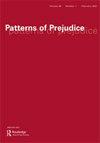Race matters
IF 0.8
2区 社会学
Q4 ETHNIC STUDIES
引用次数: 0
Abstract
Why Race Still Matters is a persuasive and exhaustive study of how race pervades our societies. The author, Alana Lentin, has crafted this book in race critical scholarship with meticulous attention to the world around us. It begins with an urgent focus on the everyday violence faced by black and minority ethnic communities as they go about their daily lives, using the example of the Christchurch mosque killing of fifty-one Muslim people from South Asian and African diasporas by an ‘eco-fascist’ white Australian (15 March 2019). This massacre went on grimly to inspire further deadly attacks on vulnerable communities in several parts of the world: El Paso massacre (3 August 2019), Oslo shootings (10 August 2019) and Halle killings (9 October 2019). Lentin jolts our minds from the very first page to assert that race matters in our contemporary world, and always has, because the acts committed in its name are capable of revealing the ‘vulnerability to premature death’ of those deemed racially Other. In particular, the book is critical of the idea that calling out racism amounts to racism. Lentin builds a compelling case for the notion that race is a technology of modern rule, ‘the main goal of which is the production, reproduction, and maintenance of white supremacy on both a local and a planetary level’ (5). In the above characterization of race, she draws from the scholarship of Stuart Hall, Alexander Weheliye and Ruth Gilmore, among others. She provides a detailed discussion on how, despite being a social construct, race still gets enacted and lived through bodies and is constantly linked to practices of racism. The book is a clear exposition of how race has been made to appear insignificant in certain strands of scholarship and popular culture, and why this is dangerous and must be resisted at all costs. Lentin does this by dividing the book into four thematic chapters. She uses the first chapter entitled ‘Race beyond Social Constructionism’ to discuss snippets from public discourse, such as television interviews and developments in academic scholarship, to discredit resurgent efforts at ‘race realism’. While reiterating that race does not have a biological basis,种族问题
《为什么种族仍然重要》是一本关于种族如何渗透我们社会的有说服力且详尽的研究。作者Alana Lentin在种族批判的学术研究中精心制作了这本书,并对我们周围的世界进行了细致的关注。报告首先紧急关注黑人和少数民族社区在日常生活中面临的日常暴力,并以基督城清真寺杀害51名南亚和非洲移民穆斯林为例(2019年3月15日)。这一屠杀残酷地继续下去,激发了世界多个地区对脆弱社区的进一步致命袭击:埃尔帕索大屠杀(2019年8月3日)、奥斯陆枪击事件(2019年8月10日)和哈雷杀戮事件(2019年10月9日)。兰汀从一开始就震撼了我们的思想,他断言种族在我们的当代世界很重要,而且一直如此,因为以它的名义犯下的行为能够揭示那些被认为是种族的“过早死亡的脆弱性”。特别是,这本书批判了大声疾呼种族主义就是种族主义的观点。Lentin为种族是现代统治的技术这一概念建立了一个令人信服的案例,“其主要目标是在地方和全球层面上生产、再生产和维持白人至上”(5)。在上述种族特征中,她借鉴了Stuart Hall、Alexander Weheliye和Ruth Gilmore等人的研究成果。她提供了一个详细的讨论,尽管种族是一种社会结构,但它仍然通过身体被制定和生活,并不断与种族主义的实践联系在一起。这本书清楚地阐述了种族在某些学术和流行文化中是如何显得无足轻重的,以及为什么这是危险的,必须不惜一切代价加以抵制。为了做到这一点,Lentin把书分成了四个主题章节。她用题为“超越社会建构主义的种族”的第一章来讨论公共话语的片段,比如电视采访和学术研究的发展,来质疑“种族现实主义”的复兴。在重申种族没有生物学基础的同时,
本文章由计算机程序翻译,如有差异,请以英文原文为准。
求助全文
约1分钟内获得全文
求助全文
来源期刊

Patterns of Prejudice
Multiple-
CiteScore
2.50
自引率
0.00%
发文量
11
期刊介绍:
Patterns of Prejudice provides a forum for exploring the historical roots and contemporary varieties of social exclusion and the demonization or stigmatisation of the Other. It probes the language and construction of "race", nation, colour, and ethnicity, as well as the linkages between these categories. It encourages discussion of issues at the top of the public policy agenda, such as asylum, immigration, hate crimes and citizenship. As none of these issues are confined to any one region, Patterns of Prejudice maintains a global optic, at the same time as scrutinizing intensely the history and development of intolerance and chauvinism in the United States and Europe, both East and West.
 求助内容:
求助内容: 应助结果提醒方式:
应助结果提醒方式:


